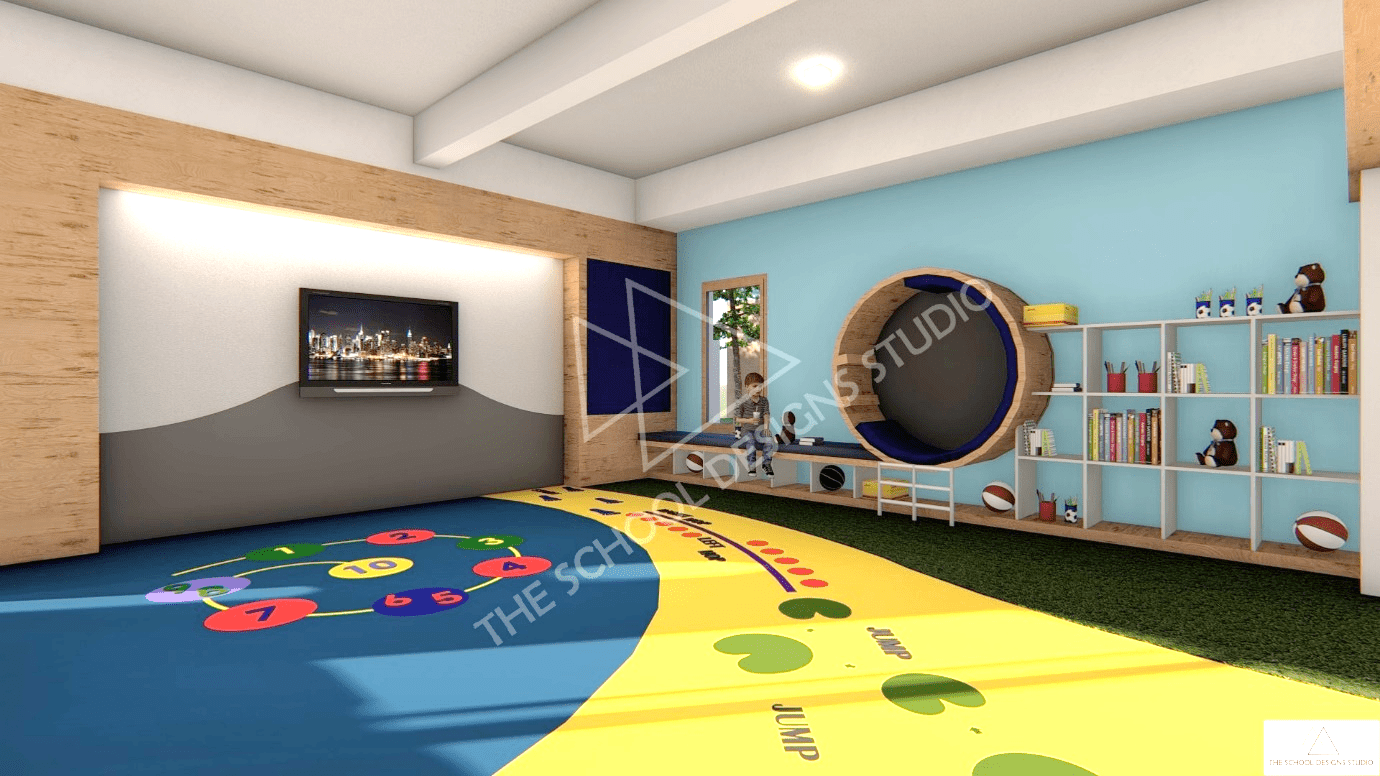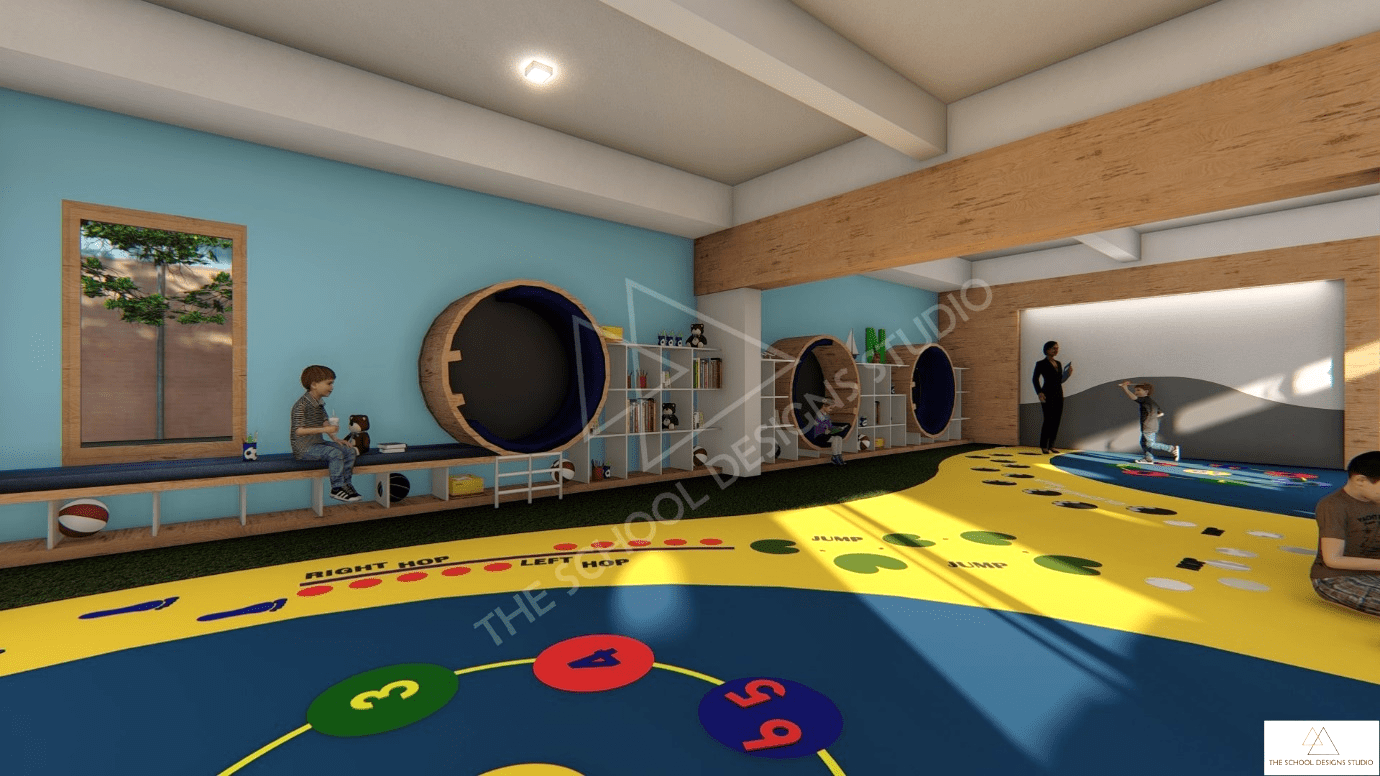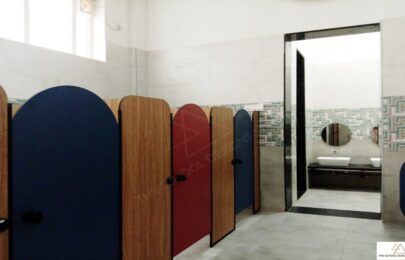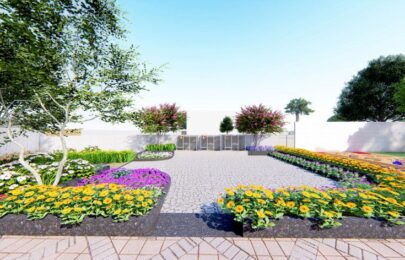Have you wondered how can your school building be reinvented to fit into your curriculum? To ignite creativity in kids, one should provide creative space, to begin with. It is evident when recognizing the instructive power of kids surrounding the realization of the environment as the third teacher.
This is one of the many stories of how architects at The School Designs Studio collaborate with educators around India to help them mold the third teacher.
Research shows that the principle of instructive space in kindergartens boosts social contacts also children’s access to equipment and their physical activity increases many-fold compared to that of their peers in traditional kindergartens.
Facades into Play Elements/Interactive Facades
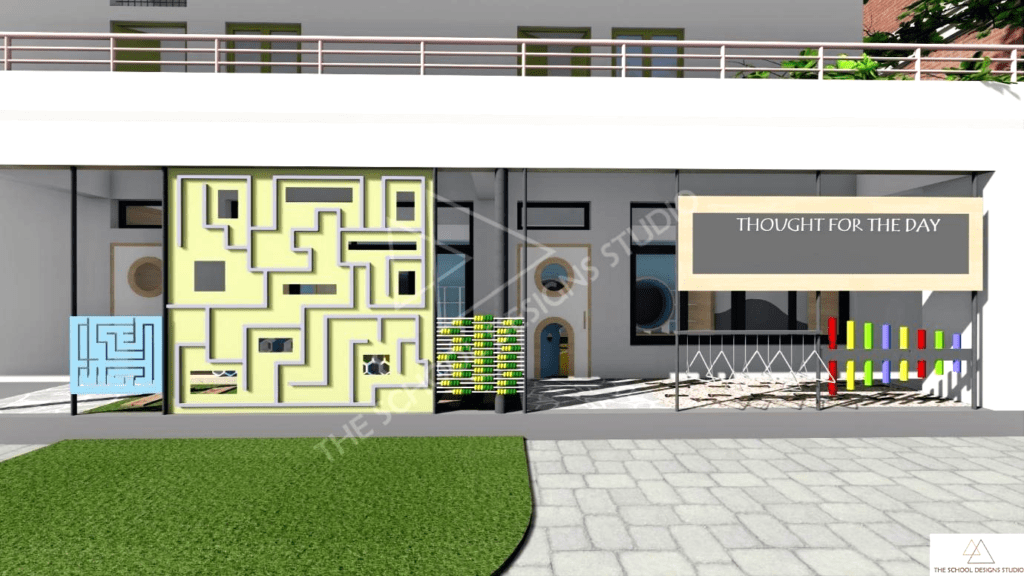
School can be very formal and aesthetically pleasing but at the same time, it can surely be made irresistible for a kid to start right away. Playing with the garden orchestra (a musical activity) can help create more networks between the cells in the brain and also, isn’t music an instant mood lifter, for everyone!
One can overcome the cliches of spaces designed for kids by having functional elements that boost the different cognitive skills of the child effectively. These activities can be climbing wall that helps kids to master gross motor skills, flexibility, and build confidence.
More than just a shoe-rack
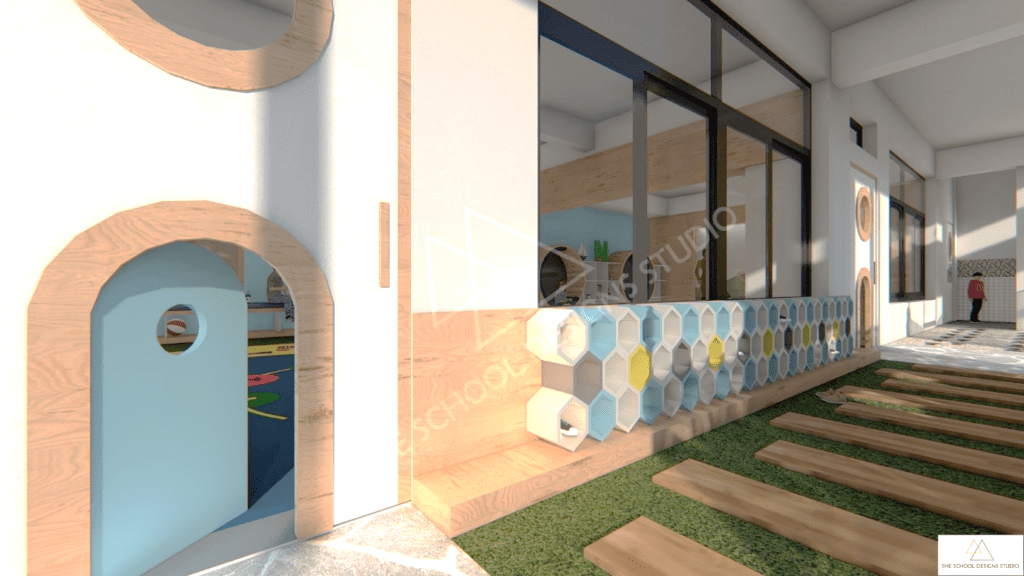
Leaving the footwear outside the premises is essential for children’s hygiene. However, to an architect at The School Designs Studio, this is an opportunity to create an interactive learning point for children. It can be a colourful hexagon-shaped shoe rack with kids’ names. Along with learning numbers, colours and shapes, kids will learn discipline and a sense of ownership.
Sensory Pathway
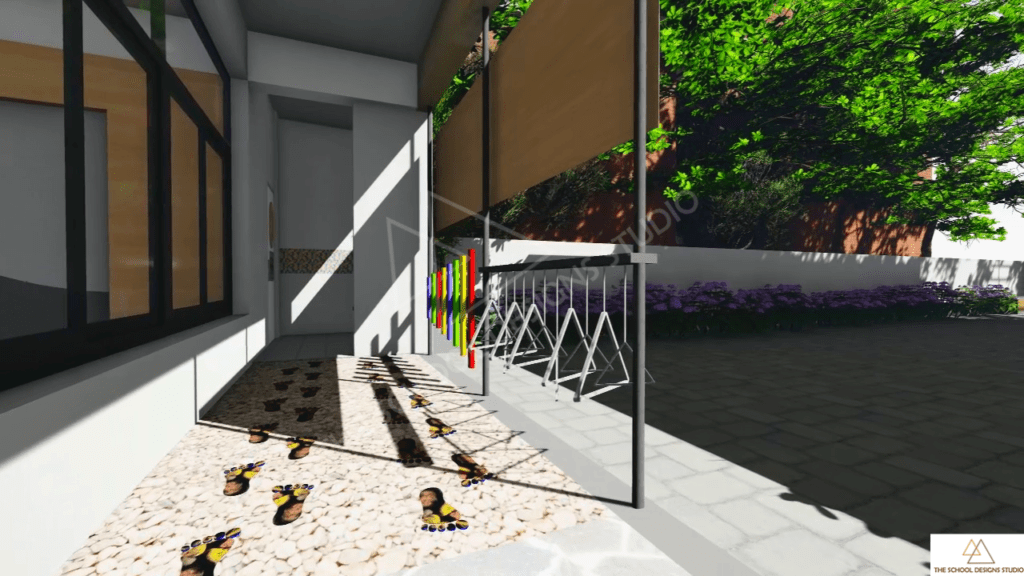
The preschool curriculum of sensory play may not have to start in the classroom. Ordinary corridors can be converted into a showcase of the learning processes like sense stimulating pathways on textured flooring better develop the neural connections of the child’s brain.
Interactive Interior / Versatile Interior
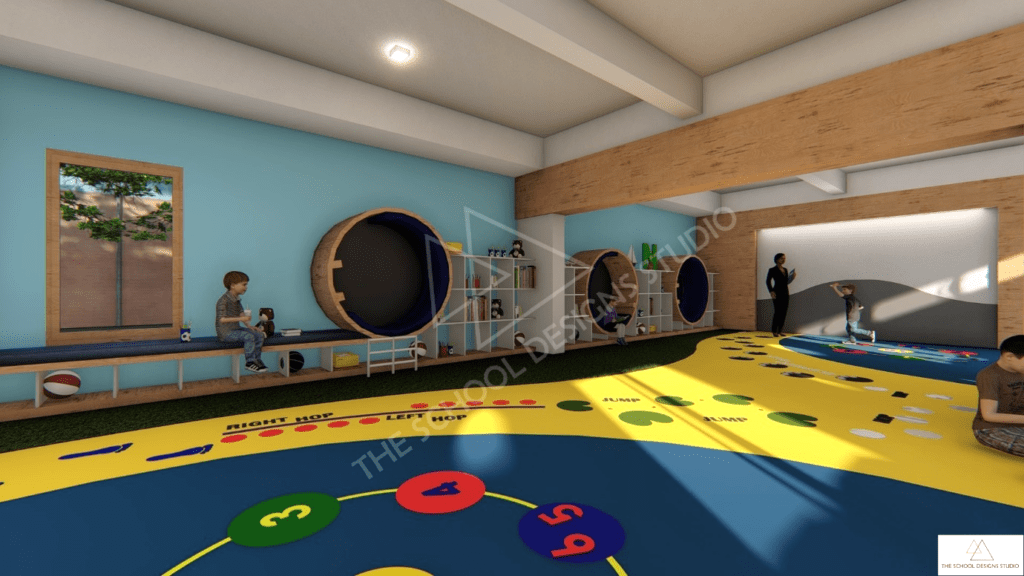
A unified open play space encourages children to be physically and socially active. Appropriate for kids in their various stages of learning to explore the entire space safely, this interior classroom design takes a minimalist approach to remove unnecessary furniture and equipment – with just enough to stimulate their imagination and satiate their curiosity.
The idea of the individualistic interpretation of learning can be channeled to make the school interiors into functioning play elements and a self-guided learning paradise.
Little World
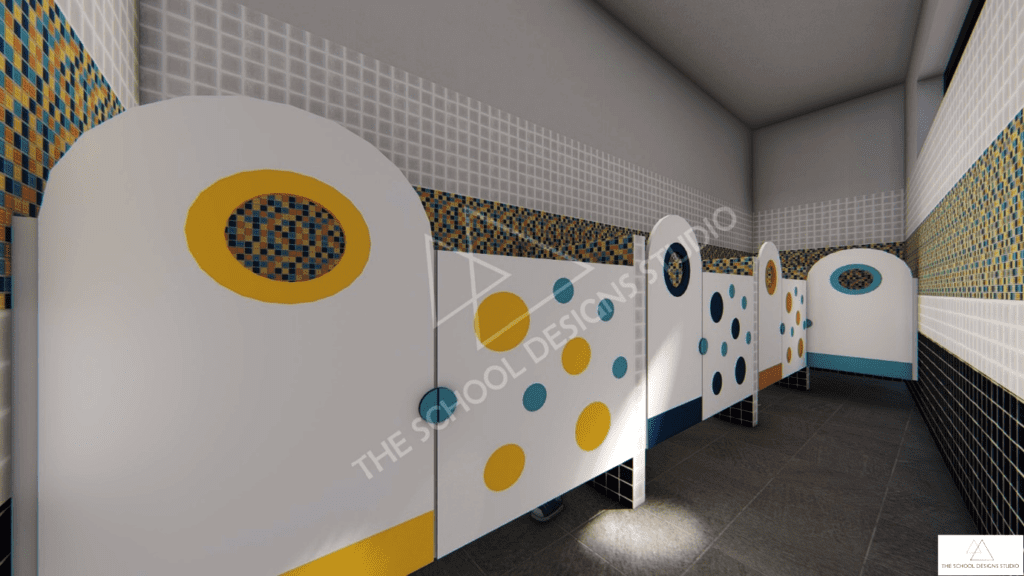
Another core philosophy of designing spaces for kids is it should operate at the kids’ scale, a place that children can in-habitat and own. Just small furniture won’t do; this should be visible in every aspect of the place.
Creating an interactive environment shows that educators acknowledge the significance of the environment as a third teacher in early childhood education.
Do you agree with our perspective on learning spaces? We invite you to drop a mail at info@theschooldesignsstudio.com or give us a call at +91 8310094975 or 080-49775131.

